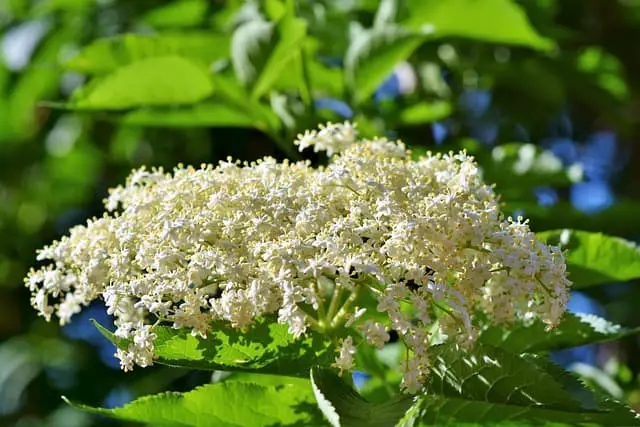Popular for its numerous medicinal purposes, elderberry can be considered a “miracle” plant. A member of the Moschatel family, elderberry is effective in the treatment of colds, flu, allergies, and other health problems.
When looking for these berries in your environment, you need to be careful. This is because there are many weeds that look like elderberries, including toxic ones. Being able to differentiate each plant from the others can help prevent health hazards.
In this article, we will discuss the 5 elderberry look-alikes one after another. Get comfortable and keep on reading to find out!
Weeds That Look Like Elderberry
More posts like this:
- Plants That Look Like Tomato Plants
- Weeds That Look Like Succulents
- Plants That Look Like Raspberries
- Flowers that Look Like Babys Breath
1. Pokeweed (Phytolacca americana)
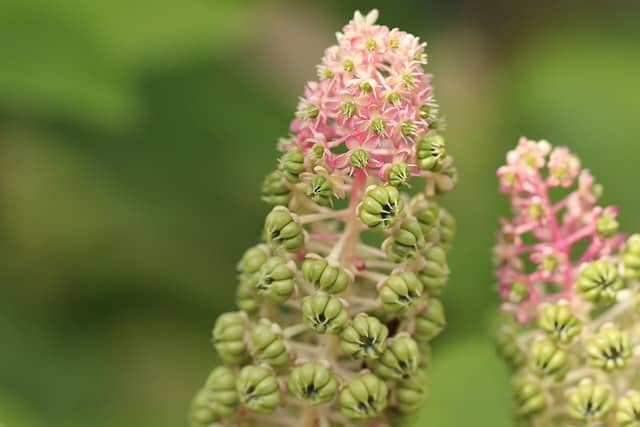
Due to their noticeable similarity, it is easy to confuse pokeweed with elderberry. Also known as American pokeweed and inkberry, pokeweed is a perennial plant that can grow between 4 and 10 feet high. This plant originates from the sandy or wet areas of eastern America.
From late summer to fall, the plant produces berries, which change as they ripen from red to purple, then purplish-black.
Most of the time, pokeweed is grown for ornamental purposes because of its eye-catching berries. Even though the roots and stems of the young pokeberry can be eaten, they should be avoided.
As the plant matures, its root, leaves, stem, and berries become toxic to both humans and animals. Extracts from the pokeweed berries can be used to make dyes.
2. Devil’s Walking Stick (Aralia spinosa)
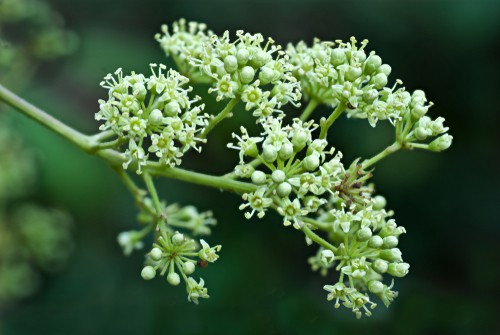
From its unusual appearance, it’s not surprising how the devil’s walking stick got its name. Almost all parts of the plant’s stem, leaf stalks, and branches are covered with sharp spines. Other names for the devil’s walking stick include Hercules’ club, prickly elder, and prickly ash.
Native to eastern North America, this woody plant species belongs to the Araliaceae family. Mature plants are usually large and straight and can grow up to 10–15 feet tall.
Similar to the elderberry plant, the devil’s walking stick’s clusters of purplish-dark berries begin to ripen from August to October.
Usually, this plant is grown for ornamental purposes due to its attractive foliage and large, beautiful flowers. Its young leaves are also edible when sliced and cooked.
3. Blackthorn (Prunus spinosa)
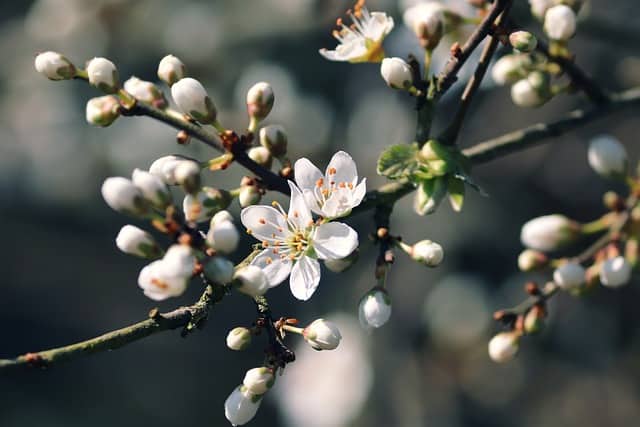
Native to Europe and Western Asia, blackthorn is among the weeds that look like elderberry. Around February and March, the blackthorn tree produces white flowers that serve as a source of pollination for insects, including bees.
As a form of defense against animals, the tree grows sharp spines that surround its branches. By October, the blackthorn fruits, also known as sloes, are ready for harvest. When unripe, the fruits are usually green but turn black like elderberries when ripe.
In some parts of the world, the blackthorn fruits are processed into gin or liquor. Sloes can also be used as major ingredients in the production of fruit pies and jams.
Blackthorn trees are a great source of food and shelter for birds.
4. Water Hemlock (Cicuta maculata)
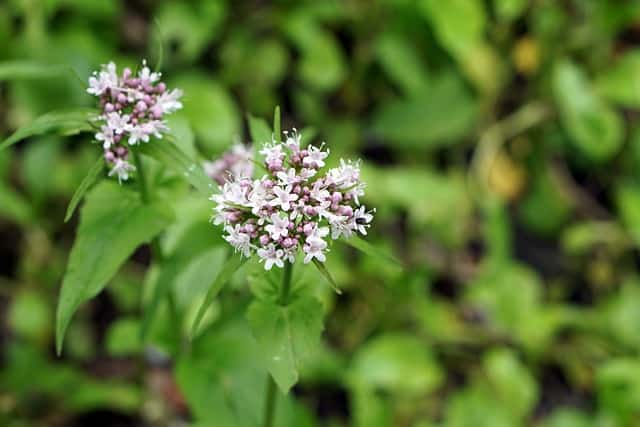
Despite sharing similar features with elderberries, water hemlock is not edible due to its toxic nature. Other names for water hemlock include spotted cowbane, poison parsnip, and spotted water hemlock. It is mostly found along stream banks, pastures, roadsides, construction sites, and wetlands.
Native to North America and Europe, water hemlock is among the poisonous plant species in the Apiaceae family. This plant contains cicutoxin, a toxin that acts directly on the central nervous system of humans and animals if ingested. Water hemlock poisoning causes seizures, convulsions, and, without immediate medical attention, death.
Mature plants can grow up to 8 feet tall, producing alternate leaves that can be 12 to 35 inches long. From spring to early summer, the water hemlock plant produces small, white, or green umbrella-shaped flowers.
5. Silky Dogwood (Cornus amomum)
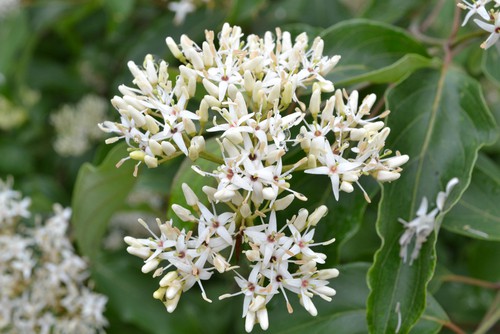
Another plant that produces fruits that look similar to elderberries is silky dogwood. Other names for silky dogwood include silky cornel, squawbush, and kinnikinnick.
Usually, this deciduous shrub produces yellowish-white flowers between May and June. Without proper care and attention, this plant can form thickets around its environment. Native to eastern North America, silky dogwood grows mostly in wet areas such as swamps.
Many gardeners grow silky dogwood mainly for decorative purposes. From its flowers to its leaves and fruits, the plant can be considered unique.
Apart from being used for ornamental purposes, homeowners plant silky dogwood to help control erosion in areas that have slopes.
Final Thoughts
Elderberries are one of the plants to have in your garden due to their benefits. As you can see, some of the weeds that look like elderberries are toxic.
Pokeweed, water hemlock, and the devil’s walking stick are among the toxic plants that share a resemblance with elderberries.
From this guide, we’re sure you can now tell one plant apart from another. Whenever you want to use the elderberry, especially for medicinal purposes, practice moderation.
Frequently Asked Questions
What Happens If You Eat Raw Elderberries?
Uncooked elderberry seeds, leaves, and fruit contain a cyanogenic compound. Consuming too much of these berries can cause cyanide buildup in the body. As a result, you may experience some symptoms, including diarrhea, stomach pain, nausea, and vomiting.
Other times, you may experience drowsiness, dizziness, and tiredness. After ingesting large amounts of elderberries, drink a glass of water or milk immediately.
Is Elderberry Toxic to Dogs?
Yes, elderberry plants are highly toxic to dogs as a result of their amygdalin content when unripe. Within 15 to 20 minutes of consuming these berries, your dog will begin to experience unpleasant symptoms.
Some of the signs you’ll notice include nausea, excessive drooling, dilated pupils, tremors, diarrhea, and breathing difficulty. Call the vet immediately if you notice these signs in your pet. If you don’t take quick action, the dog may die within 30 to 50 minutes.
What Do Elderberries Do for Your Body?
Elderberries provide a wide range of health benefits for the body. Its fruits and flowers are rich in vitamins and antioxidants that help improve the immune system.
Some health professionals suggest that elderberries are useful for the treatment of colds and flu. These berries can also be used in the treatment of fever, pain, certain skin conditions, and stress.

Hey, I’m Lisa and I’ve been an avid gardener for over 30 years. I love writing, talking and living in the garden! Feel free to connect with me on my socials below

